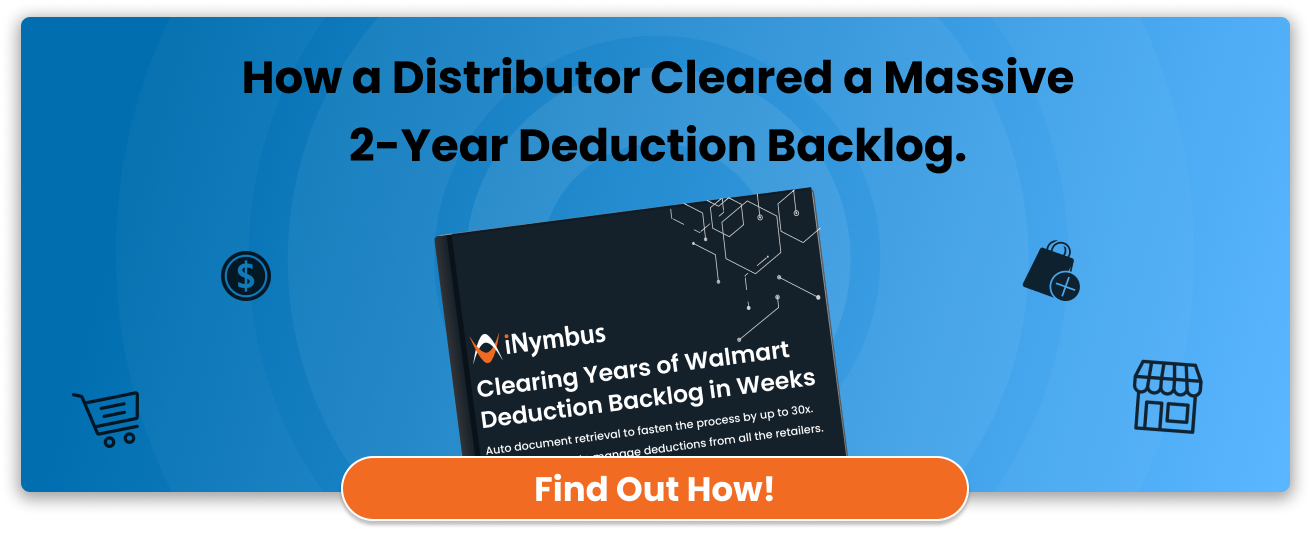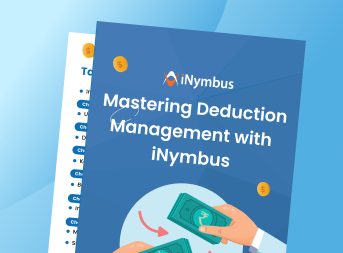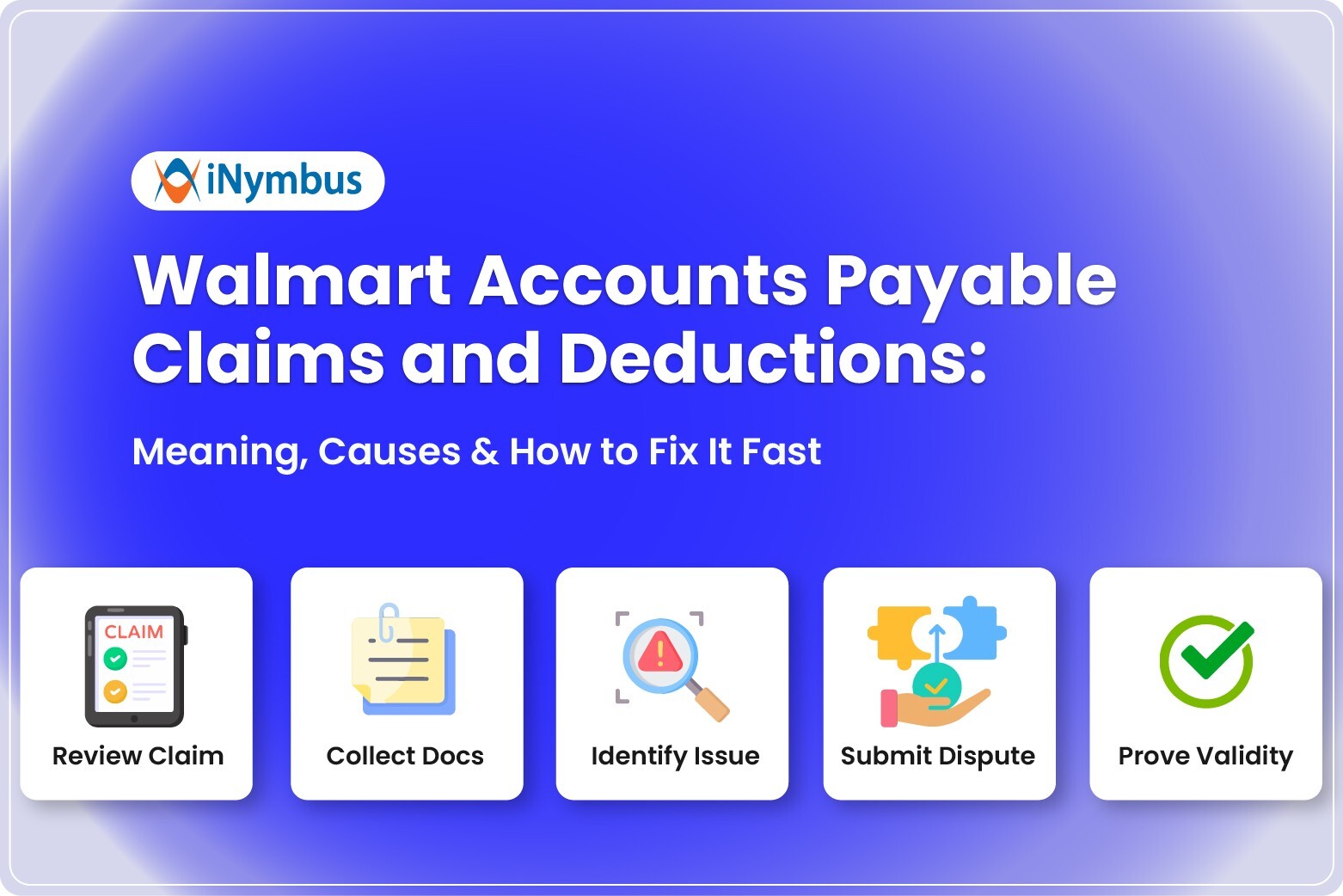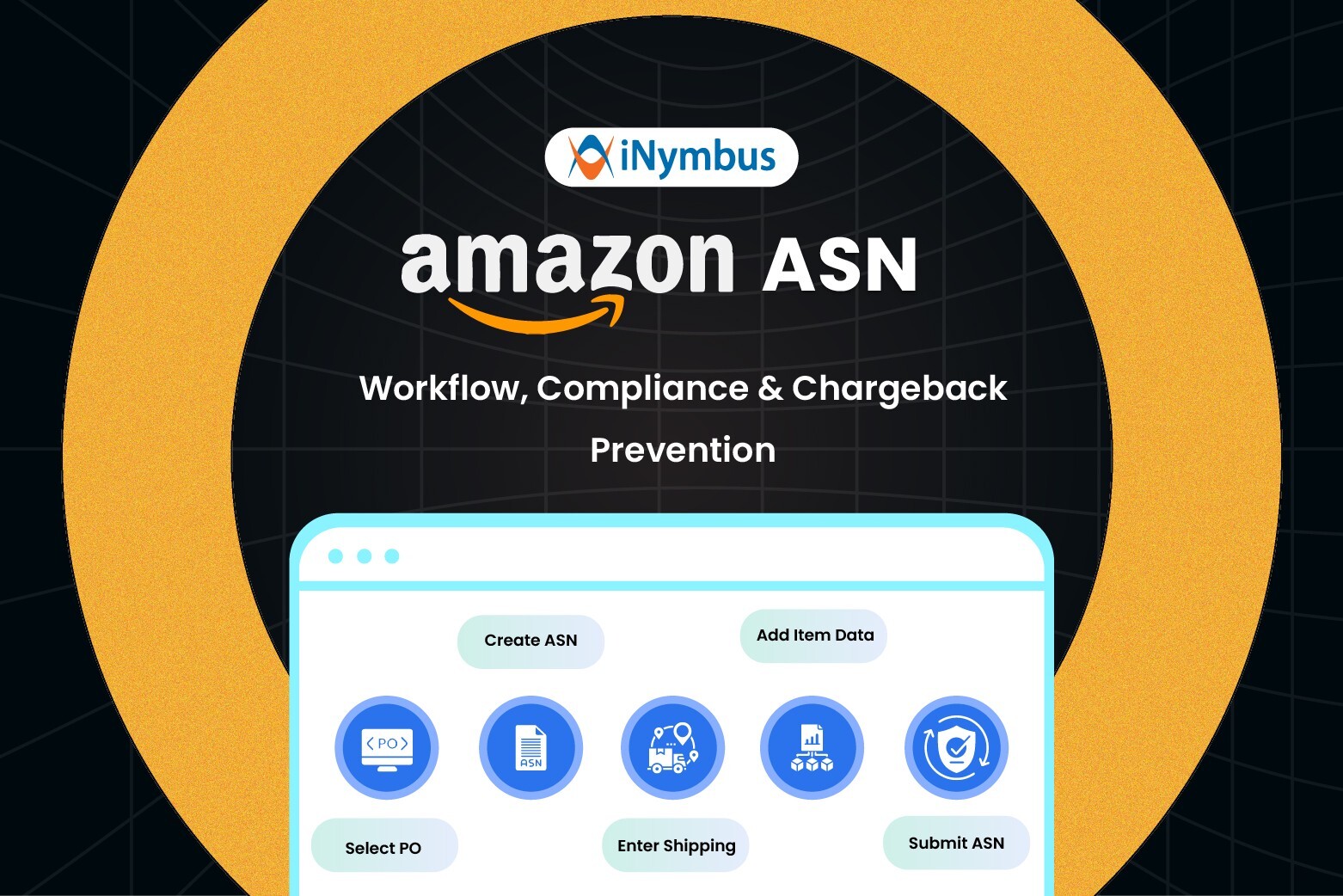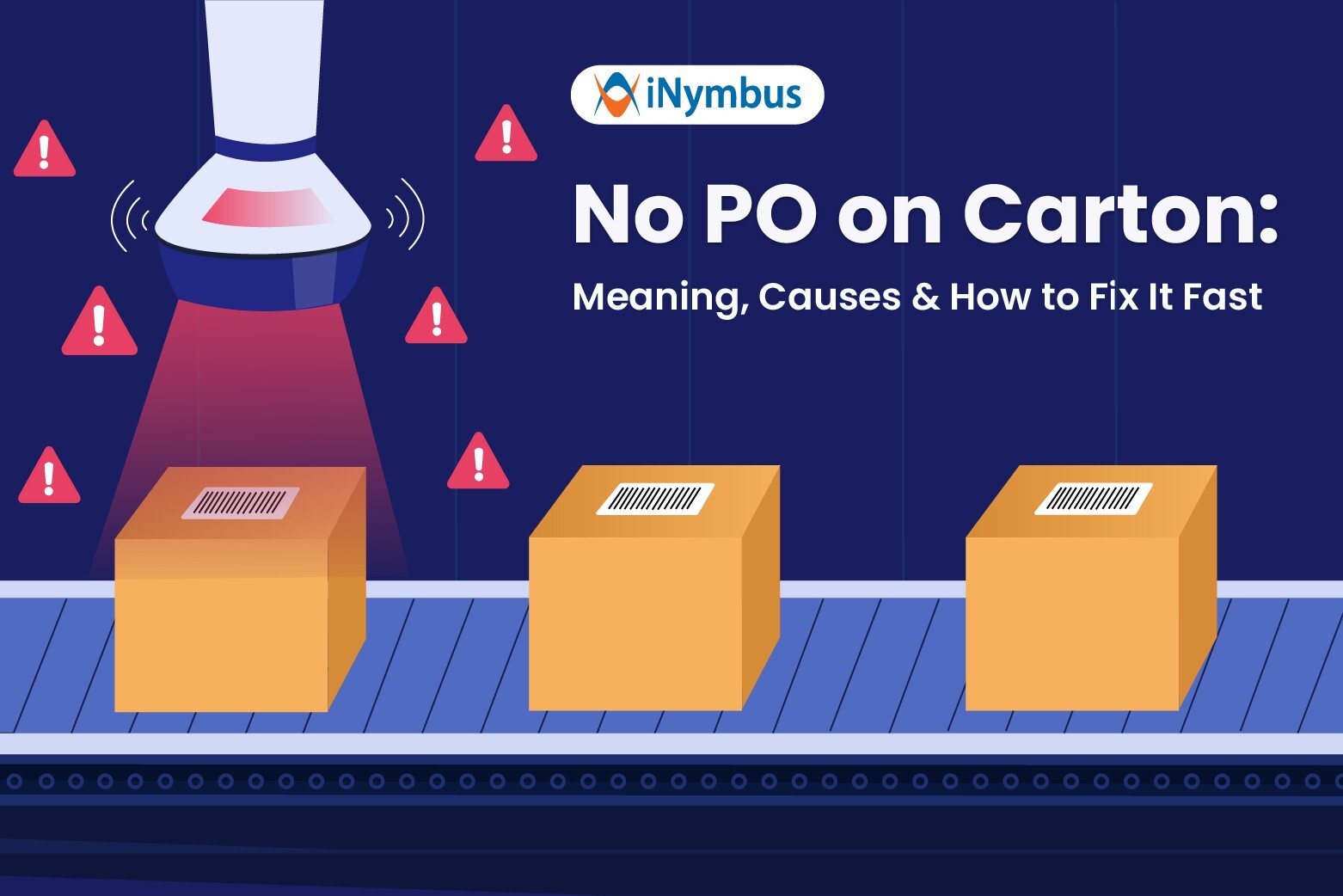CPG Supply Chain Management: Definition, Challenges, and Strategies
 The consumer packaged goods (CPG) supply chain is one of the most dynamic and demanding ecosystems in the retail industry. Vendors and suppliers are under constant pressure to keep up with shifting consumer preferences, rising retailer expectations, and the need to deliver quickly, often across multiple sales channels.
The consumer packaged goods (CPG) supply chain is one of the most dynamic and demanding ecosystems in the retail industry. Vendors and suppliers are under constant pressure to keep up with shifting consumer preferences, rising retailer expectations, and the need to deliver quickly, often across multiple sales channels.
Managing these challenges effectively is critical to keeping products on shelves, avoiding chargebacks, and staying competitive.
This guide will walk you through how CPG supply chains operate, what makes them uniquely complex, and the key strategies you can use to improve efficiency, reduce errors, and strengthen retailer relationships.
What Is CPG Supply Chain Management?
CPG supply chain management refers to the end-to-end process of moving consumer goods (like snacks, beverages, cleaning products, and personal care items) from the manufacturer to the store shelf or consumer’s doorstep.
Here’s a high-level overview of the typical CPG supply chain:
- Raw material sourcing
- Manufacturing and packaging
- Warehousing and inventory management
- Transportation and logistics
- Retail compliance and delivery
- Returns and reverse logistics
While this framework might resemble supply chains in other industries, CPG logistics is uniquely driven by speed, precision, and complexity. These are high-volume, fast-moving products with tight margins and little room for error.
What Makes CPG Supply Chain Challenging?
CPG supply chains are built for velocity. Products must move rapidly through each stage to meet tight delivery windows and ensure store shelves stay stocked. A delay of even a day can result in:
- Missed retail delivery appointments
- Lost sales and out-of-stocks
- Chargebacks or vendor penalties
- Damaged relationships with retailers
Here are the most common pain points suppliers face:
1. Demand Volatility
CPG products are sensitive to trends, promotions, and seasonality. A sudden spike in demand, like a viral TikTok video promoting a specific snack, can throw off forecasts overnight.
2. Retail Compliance
Big-box retailers such as Walmart, Target, and CVS each maintain unique shipping, labeling, and documentation standards. Failing to meet these requirements often leads to chargebacks and financial deductions.
3. Multi-Channel Fulfillment
Suppliers must cater to diverse channels: traditional retail, online marketplaces, and direct-to-consumer (DTC). Each has distinct logistics and compliance needs, which add operational complexity.
4. Data Silos and Lack of Visibility
Supply chain data is often spread across multiple systems (ERPs, 3PL dashboards, spreadsheets, retailer portals). Without centralized visibility, making timely, accurate decisions becomes difficult.
5 Priorities for Streamlining CPG Supply Chains
To succeed in this environment, vendors and suppliers need a modern, agile approach. Here are the five key focus areas to strengthen your CPG supply chain operations:
1. Improve Inventory Accuracy and Demand Forecasting
Forecasting mistakes can lead to stockouts, overstocks, or markdowns. Modern supply chains require smarter, real-time demand sensing strategies, including:
- Analyzing Point of Sale and sell-through data from retailers
- Monitoring promotional calendars and seasonal trends
- Integrating external signals (such as social media trends or weather forecasts)
- Collaborating on shared forecasts with retail partners
2. Strengthen Retailer Compliance and Minimize Chargebacks
Each retailer has its own delivery rules and documentation standards. Getting it wrong, whether it’s a missing label, late shipment, or ASN error, can result in expensive chargebacks.
To reduce these risks:
- Automate shipment checks for labels, documentation, and packaging
- Integrate retailer routing guides into warehouse workflows
- Use deduction management software such as iNymbus to automate chargeback tracking and disputes
- Maintain updated SOPs for every retailer's compliance requirements
iNymbus, for example, helps vendors track deductions from major retailers and automate the dispute process. This turns a time-consuming task into a streamlined workflow.
3. Optimize Logistics and Carrier Performance
Logistics is the backbone of the CPG supply chain. Poor carrier performance can derail even the most well-planned shipments.
To optimize logistics:
- Track on-time delivery rates across all carriers
- Monitor recurring delay patterns on specific lanes or routes
- Use a transportation management system (TMS) to plan and optimize shipments
- Avoid split shipments unless absolutely necessary
For DTC shipments, explore zone-skipping or micro-fulfillment centers to reduce last-mile delivery times and costs.
4. Increase Supply Chain Visibility Across All Partners
You can’t fix what you can’t see. Real-time visibility into order status, inventory levels, and shipment tracking is critical for proactive decision-making.
Steps to improve visibility:
- Implement barcode or RFID scanning at each stage
- Create shared dashboards with your logistics and retail partners
- Integrate EDI systems for automatic data sharing
- Use predictive alerts for at-risk shipments or inventory shortages
A centralized view of your supply chain enables faster issue resolution and greater trust with your partner.
5. Embrace Automation and Digital Tools
Manual processes, such as keying in shipment data or disputing retailer deductions, are prone to errors and do not scale well.
Automating these tasks not only improves efficiency but also frees up your team for more strategic work.
Examples of automation in action:
- Auto-generating BOLs, ASNs, and packing slips
- Using RPA (Robotic Process Automation) bots to extract deduction data from portals
- OCR (Optical Character Recognition) for digitizing invoices
- AI-powered forecasting based on real-time demand signals
iNymbus, for instance, automates the entire deduction workflow and integrates with systems like Retail Link (Walmart) and Partners Online (Target) to reduce chargeback errors and recover lost revenue faster.
Building a Smarter, More Resilient Supply Chain
Today’s CPG supply chain is no longer just about moving goods. It's about creating a synchronized, intelligent system that adapts to change, improves collaboration, and reduces friction.
Here’s what the future looks like:
- AI-driven forecasting and anomaly detection
- Sustainable logistics networks that prioritize eco-efficiency
- Stronger digital collaboration tools between vendors and retailers
- Automation-first strategies for dispute resolution and chargeback management
With growing emphasis on data sharing and transparency, vendors who invest in the right systems will be best positioned to thrive.
Conclusion
Managing a CPG supply chain today means balancing speed, accuracy, and flexibility, while keeping up with evolving retailer demands and market changes. For vendors and suppliers, staying competitive requires more than just operational know-how. It demands strategic use of automation, better data visibility, and strong compliance workflows.
Platforms like iNymbus play a vital role in helping CPG suppliers tackle one of the most frustrating and costly areas of supply chain operations: deduction management.
By automating the tedious and time-sensitive task of disputing invalid chargebacks, suppliers can recover revenue faster, maintain healthy margins, and build stronger relationships with retail partners.
Ready to stop losing money to chargebacks?
Explore how iNymbus Deduction Management can streamline your workflows and reduce retailer friction so you can focus on growing your business.
